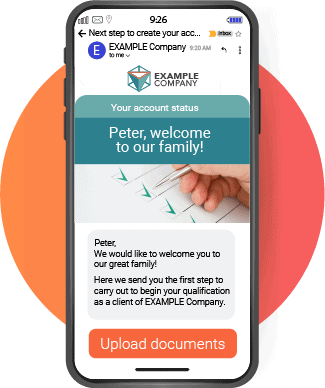In the fast-paced world of Information Technology, professionals often find themselves at the forefront of technological advancements, working tirelessly to deliver innovative solutions to clients. The demands of this industry are relentless, and it’s no secret that IT professionals frequently grapple with the challenge of maintaining a healthy work-life balance. In this article, we explore the intricacies of work-life balance in the IT services sector and provide strategic insights to help both employees and employers address this critical issue.
The IT Services Landscape: Where Time Never Sleeps
The IT services industry is characterized by constant evolution, where staying ahead of the curve is not just a desire but a necessity. From software development and network management to cybersecurity and cloud computing, IT professionals are tasked with keeping organizations’ digital infrastructure secure and efficient. This unceasing demand for expertise often translates into long hours, tight deadlines, and a pervasive “always on” mentality.
The Impact on IT Professionals
As the industry’s heartbeat quickens, IT professionals often find themselves torn between their commitment to their careers and the desire for a fulfilling personal life. This work-life imbalance can take a toll on their overall well-being, leading to burnout, stress, and strained relationships. The consequences of this imbalance can extend beyond the individual to impact the organization’s productivity, employee retention, and overall workplace culture.
A Strategic Imperative in work-life balance
Recognizing the importance of work-life balance is not just a matter of empathy; it’s a strategic imperative for IT services firms. A burnt-out workforce is less likely to innovate, collaborate effectively, or provide the exceptional service that clients demand. In a highly competitive industry, where talent is the driving force, nurturing a healthy work-life balance is essential to attract and retain top talent.
Striking the Balance: Employee-Centric Strategies
To address the work-life balance challenge in the IT services sector, organizations must adopt employee-centric strategies. This includes:
- Flexible Work Arrangements: Offering flexible work hours or remote work options can empower IT professionals to better manage their personal and professional lives.
- Clear Boundaries: Encouraging employees to establish clear boundaries between work and personal time can prevent burnout and promote mental well-being.
- Mental Health Support: Providing access to mental health resources and support can help employees cope with the stressors of the industry.
- Continuous Learning: Investing in employee development can foster a sense of growth and achievement, contributing to overall job satisfaction.
- Effective Resource Management: Ensuring that projects are adequately staffed and resourced can reduce the burden on individual team members.
In the next part of this article, we will delve deeper into specific strategies that IT services organizations can implement to promote work-life balance and share real-world success stories of companies that have made significant strides in this area.
Strategies for Achieving Work-Life Balance in IT Services
In Part 1 of this article, we examined the challenges faced by IT services professionals in maintaining a healthy work-life balance. In Part 2, we will delve deeper into specific strategies that IT services organizations can implement to promote work-life balance.
1. Task Prioritization and Agile Methodologies
In the IT services industry, juggling multiple projects and deadlines is commonplace. To alleviate the pressure on employees, organizations can adopt agile methodologies and effective project management techniques. This approach helps in setting clear priorities and allocating resources efficiently, reducing unnecessary overtime and stress.
2. Mentorship and Peer Support
Establishing mentorship programs and fostering a supportive peer network within the organization can help employees navigate the challenges of the industry. Sharing experiences, insights, and coping strategies can create a sense of camaraderie and emotional support, which are invaluable in maintaining work-life balance.
3. Employee Wellness Programs
Investing in employee wellness programs can significantly impact work-life balance. These programs may include physical fitness initiatives, mindfulness and stress reduction sessions, and access to healthcare resources. A healthy employee is often a more productive and satisfied one.
4. Smart Use of Technology
While technology can be a driver of work-related stress, it can also be a powerful tool for achieving balance. Organizations can promote the efficient use of technology by providing training on time management tools, encouraging digital detox during personal time, and setting guidelines for communication outside of working hours.
5. Performance-Based Incentives
Implementing performance-based incentives that reward outcomes rather than sheer hours worked can motivate employees to work more efficiently. By focusing on results rather than hours spent at the desk, organizations can encourage a healthier work ethic.
Real-World Success Stories
Let’s take a look at some IT services organizations that have successfully prioritized work-life balance:
- Google: Known for its flexible work policies, Google provides employees with the autonomy to manage their schedules and even offers on-site wellness programs and fitness centers.
- IBM: IBM encourages employees to take regular breaks and offers mental health support services. They also have a strong focus on diversity and inclusion.
- Microsoft: Microsoft promotes a “One Microsoft” culture that encourages work-life balance through flexible work arrangements, wellness programs, and mental health resources.
In conclusion, achieving work-life balance in the IT services sector is not only possible but also crucial for the well-being and success of both employees and organizations. By implementing employee-centric strategies, fostering a supportive culture, and learning from the successes of industry leaders, IT services firms can create an environment where professionals thrive both personally and professionally.
In this ever-evolving digital landscape, it’s time to recognize that the pursuit of work-life balance is not a luxury but a strategic necessity, and the IT services sector can lead the way in making this a reality for its dedicated professionals
Conclusion: A Balanced Future for IT Services
In the IT services industry, where technological innovation knows no bounds, the pursuit of work-life balance is not just a noble endeavor; it is an imperative. As we wrap up our exploration of work-life balance in the IT services sector, it becomes evident that this pursuit is not a matter of choice but a strategic necessity.
For IT services professionals, the challenges are real, and the stakes are high. Long hours, tight deadlines, and the constant pressure to deliver can take a toll on their well-being. Burnout, stress, and strained personal relationships are just a few of the pitfalls that loom on this demanding career path.
However, the solutions are within reach. Organizations in the IT services sector have the power to redefine the industry by prioritizing the health, happiness, and work-life balance of their employees. It’s not just about embracing flexible work arrangements or providing mental health support; it’s about fostering a culture of empathy, respect, and continuous improvement.
By implementing the strategies we’ve discussed in this article—task prioritization, mentorship, wellness programs, smart technology use, and performance-based incentives—IT services firms can pave the way for a more balanced future. Real-world success stories from industry leaders like Google, IBM, and Microsoft serve as beacons of hope, demonstrating that it’s possible to achieve equilibrium in a fast-paced world.
The IT services sector has always been at the forefront of technological innovation. Now, it has the opportunity to lead the way in innovating the very nature of work itself. By embracing work-life balance as a strategic imperative, this industry can attract and retain top talent, foster creativity, and ultimately deliver better results for clients and society as a whole.
In closing, let us remember that work-life balance is not a destination but a continuous journey. It’s a commitment to the well-being of individuals and the health of organizations. As the IT services sector continues to evolve, so too must its approach to work and life. Together, we can shape a future where IT professionals not only thrive in their careers but also enjoy a fulfilling personal life, creating a win-win situation for all.
Thank you for joining us on this exploration of work-life balance in the IT services sector. May the lessons learned here guide us toward a brighter and more balanced future.








































































